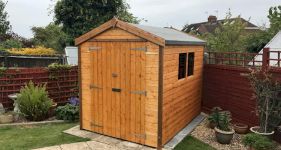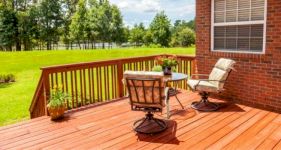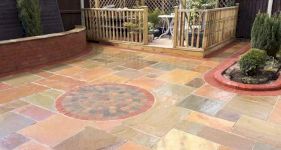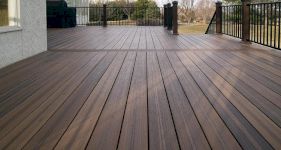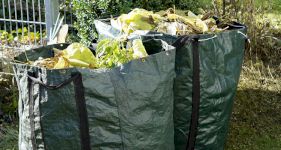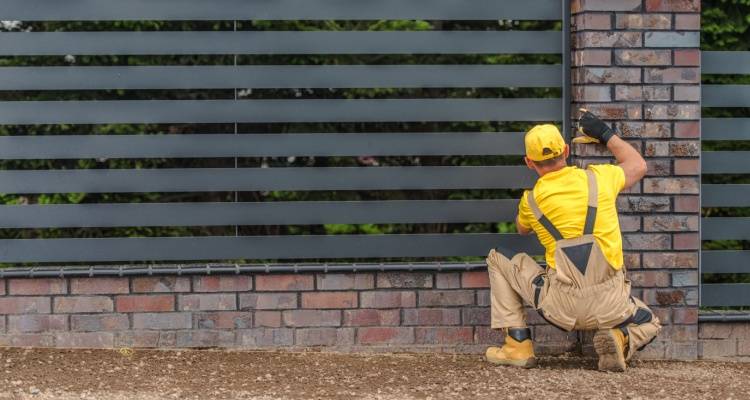How to Lay Artificial Grass
In this article we break down step by step with diagrams how to lay artificial grass. We also explain everything you may need to know in regard to maintenance, repairs and what the job involves.
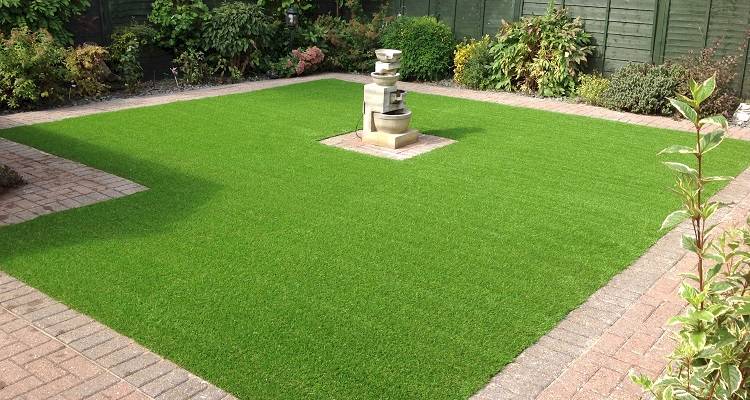
Table of Contents
What is Artificial Grass?
Artificial grass (also referred to as fake grass), is a surface of synthetic fibres that are designed to mimic the appearance of natural turf. Over the past twenty years, artificial grass has been widely used in parks, outdoor play areas and activity centres. However, investing in artificial grass costs has become increasingly popular amongst homeowners as a low maintenance alternative to the real thing.
Preparing to Install Artificial Grass
So, you have decided to install some artificial grass in your garden, great! Now it's time to talk about what you can do to prepare for the installation. Preparing the area where the turf will lay is the most essential step in achieving a beautifully finished lawn. Taking the time to prepare the area carefully will help you create a professional, quality installation.
Choosing the Right Artificial Grass
With so many options to choose from, deciding on the right kind of artificial grass for your project can be difficult. Take the time to invest in researching the varieties of synthetic grass options that are available to you. You may wish to order a few samples from various suppliers before ordering the final product. Always check with the manufacturer that the artificial grass is suitable for outdoor use and has detailed cleaning instructions.
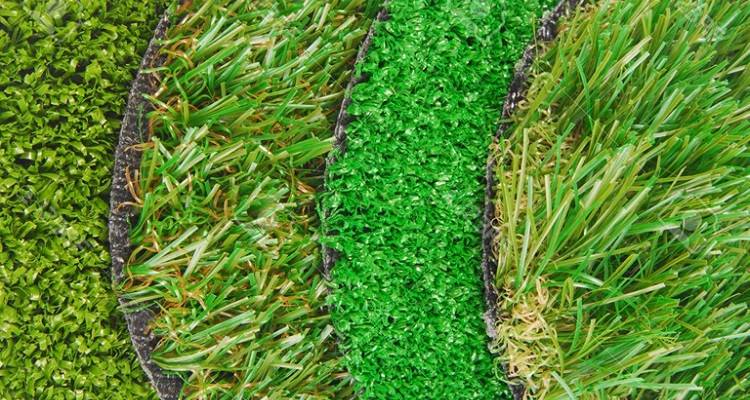
Clearing the Area
The first thing you will want to do in order to prepare the area for laying artificial grass is to remove any existing turf or weeds that will interfere with the installation. Be sure to eliminate as many roots as possible to prevent any future growth returning. This step is key to ensuring a clean and level surface for installing your new artificial lawn.
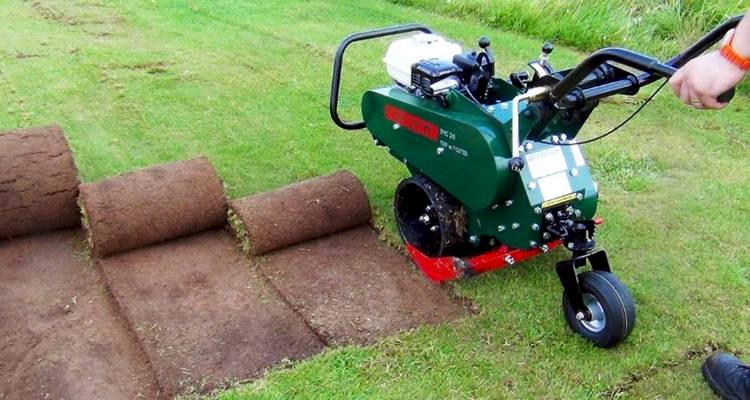
Inspect for Signs of Water Pooling
In order to achieve a professional, quality artificial lawn, your foundations must be level and completely dry. If you spot signs of water collecting, start by treating any drainage issues before considering installing artificial grass.
What Tools Do I Need to Install Artificial Grass?
To achieve the best possible finish when laying your artificial grass, you should ensure that you are equipped with the appropriate tools for the job. Not only will having the proper equipment give better results, but the process will also be much easier for you to carry out. To install artificial grass at home, we recommend you use the following:
- Metal Measuring Tape
- Spirit Level
- Straight Edge
- Turf Cutter
- Sharp Cutting Knife
- Stiff Sweeping Brush
- Sand Spreader
- Soil Compaction Roller
It would also be useful to have a Flat Shovel, a Wheelbarrow and a Skip to make cleaning up afterwards more convenient.
What Materials Do I Need to Lay Artificial Grass?
The following are also materials that you will require to install a professional looking artificial lawn.
- Synthetic Turf
- Joining Tape
- Joining Adhesive
- Weed Membrane
- Sharp Sand or Aggregate
Don't panic about having to purchase expensive equipment for installing your artificial grass. Many tools and equipment can be hired at reasonable prices.
How to Install Artificial Grass Yourself
Installing artificial grass can be reasonably straightforward for smaller areas. However, anything more complex or to simply ensure the job is carried out correctly, we would recommend hiring someone that can lay artificial grass on your behalf.
If you do decide to go ahead on your own, below is a step by step guide on how to effectively lay artificial grass by yourself.
Step 1
If you haven't done so already, measure the area where you would like your artificial grass to lay. Then, cut your roll of synthetic turf to manageable strips, to make it a little easier to handle.
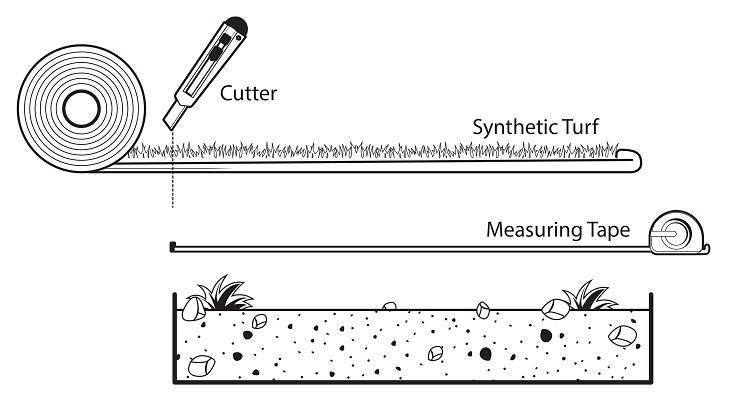
Step 2
Clear the area of any rocks, weeds or debris that will interfere with the installation of your new grass. Using a turf cutter, dig out an area of around 2-3 inches in depth, for which your sub-base will sit.
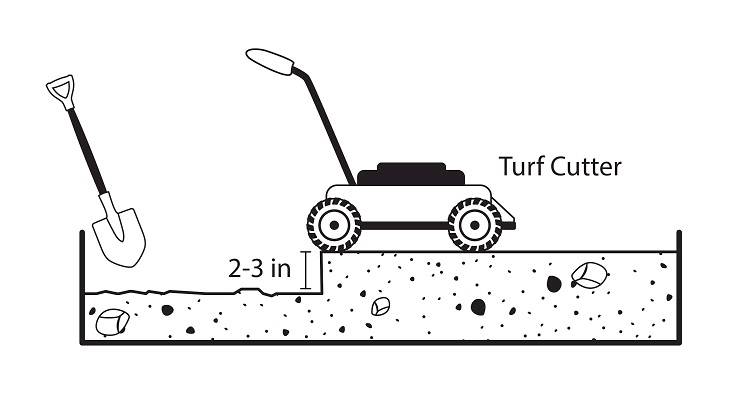
Step 3
Prepare the area to make sure that you have a solid, level base. The foundations for your grass must be as smooth as possible to reduce the chance of an uneven and lumpy surface. You can use sand or aggregate to help fill in small spaces and defects.
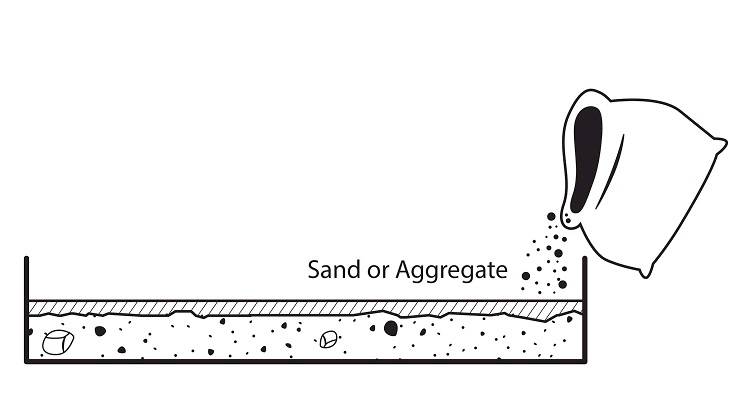
Step 4
Next it's best practice to install a protective membrane layer to help prevent weeds from growing as it's a common misconception that weeds, and other plants, won't be able to grow underneath a synthetic carpet. You should also check for signs of weeds in any surrounding soil that's adjacent to the artificial grass, including removing the roots.
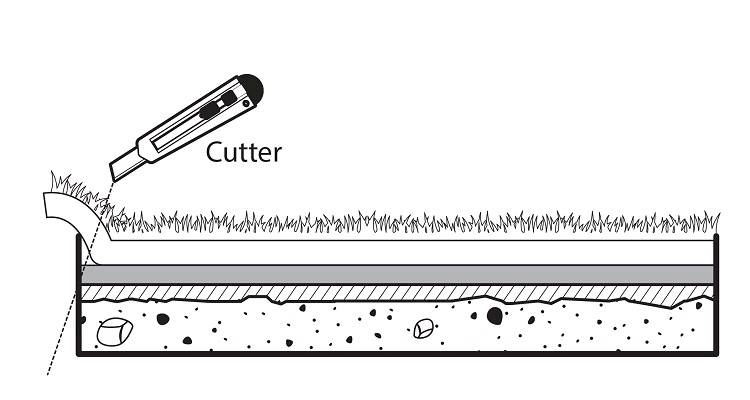
Step 5
Roll out your artificial turf carpet, trimming the edges to create a rough basic shape. Take your time when trimming your artificial grass roll, as it is always better to cut smaller pieces first than over cut. Patching up artificial grass can be tricky and doesn't always look great, so don't rush this process.
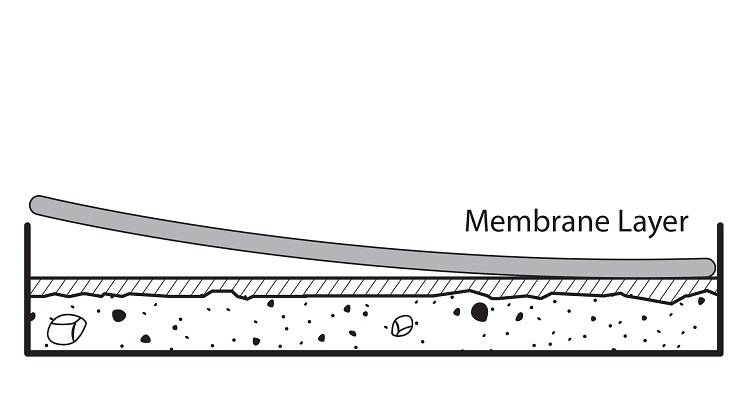
Step 6
Position the pieces of turf until they join neatly and seamlessly. A great way to disguise the edges of your synthetic turf strips is by laying the carpet so that the pile runs in the same direction. This tricks the eye and makes it difficult to notice where one strip ends, and one begins.
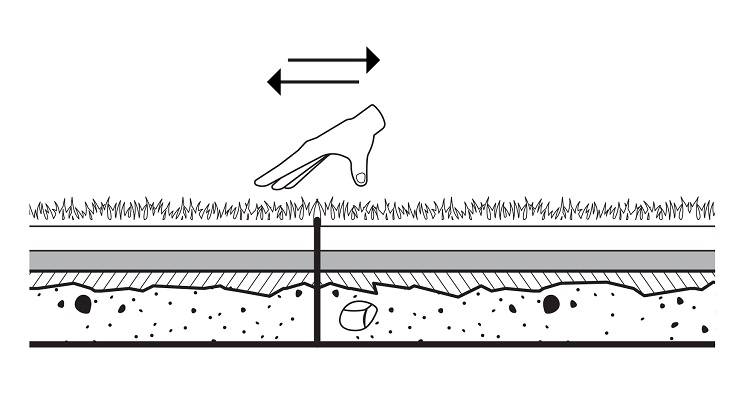
Step 7
Seal the edges of your artificial grass rolls with the appropriate joining tape or adhesive. Check with your supplier as to what adhesive they recommend will work best for your product.
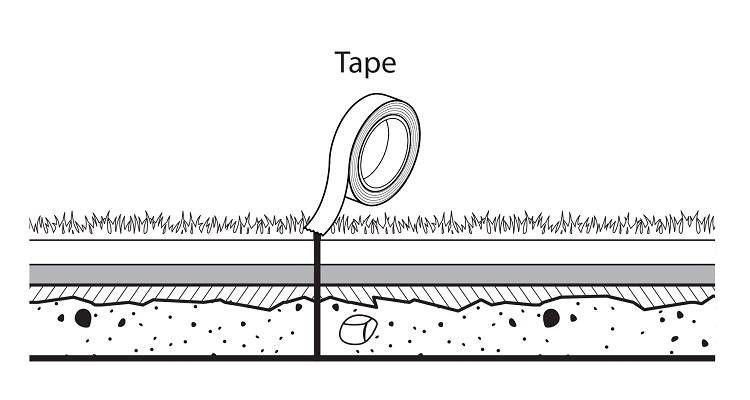
Step 8
Once you have finished fixing each seam together, you should immediately scatter a fine layer of sand across the lawn to provide stability and a protective layer over the turf. Gently brush the sand throughout the carpet, distributing evenly. This will, in turn, weigh the carpet down to reduce any movement and maintain the blades in an upright position.
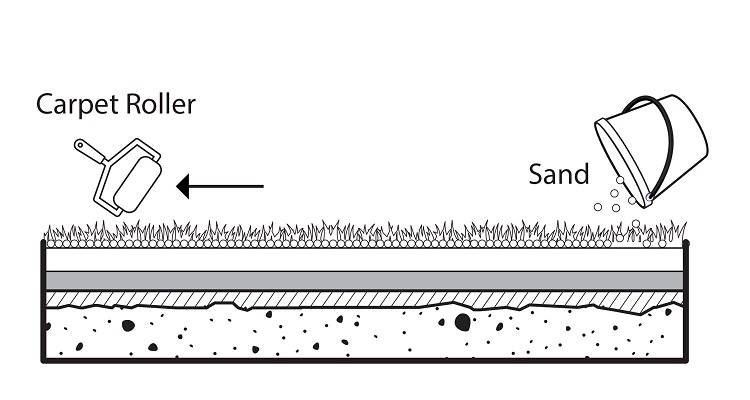
Lifting your turf and laying artificial grass is a complicated task and you should consider hiring a tradesman to carry out the work for you. We have researched the cost of laying artificial grass. Removing turf and preparing the area for your artificial grass is very labour intensive and involves a lot of landscaping. If you're not physically fit enough for the job then you risk injury.
Why Choose Artificial Grass?
As we briefly discussed, the number one reason more and more people are opting for artificial grass in their gardens is the maintenance value. Unlike natural grass, artificial grass does not require watering or regular trimming to upkeep a beautiful appearance.
With proper upkeep, the life expectancy of a quality outdoor carpet is between 20-30 years, making for a cheaper long-term investment. To keep natural turf looking its best, it requires a lot of care and attention, both physically and financially. While artificial grass is initially a more expensive purchase, you will ultimately save on feeding, watering and trimming materials in the long run.
Not only is synthetic grass low maintenance, but it is also available in a vast range of styles and colours. Because it is manufactured, it can be created to suit any design specification. Thanks to modern-day production, you will likely be able to find a product that suits your style, from the colour to the blade shape and length. Most well-made synthetic turfs are cleverly designed to replicate the familiar look and feel of real grass so that it blends in seamlessly with the rest of your garden.
Many synthetic turf manufacturers even produce ranges of artificial grass that are made from recycled materials, such as plastic bottles. This intelligent way of production means that artificial grass can be beneficial to our home and the environment.
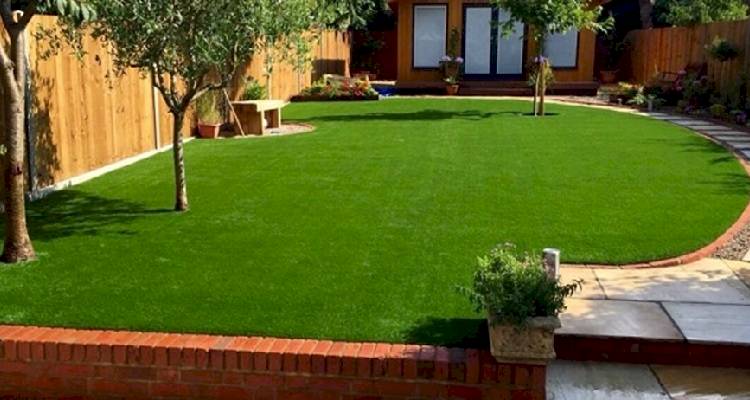
Maintenance and Repairs
Artificial grass generally requires very little maintenance, which is what makes it a popular choice amongst homeowners. Thanks to its durable synthetic fibres, many kinds of artificial grass will stand up to the test of even the harshest British weather conditions. That being said, there are still ways that you can keep your artificial lawn looking its best, by carrying out minor maintenance and repair work when necessary.
Preserving the Blades
After the settling in period, which is usually around 6-8 weeks, your artificial grass will be ready to brush or vacuum. Using a soft-bristle brush or a vacuum that is suitable for outdoor use, you can lightly sweep the carpet to keep the synthetic grass blades pointing in an upward direction. Lifting the pile, as with any other carpet, maintains the structure of the grass and keeps it looking both realistic and pristine.
Preventing Debris Building Up
Regularly dedicate the time to check your artificial lawn for any signs of debris or organic waste that may lead to a build-up. Rotting garden waste not only looks unpleasant, but it can also cause drainage issues and other extensive damage if left untreated. A regular leaf blower can be an excellent investment to help you keep your artificial grass free of garden debris.
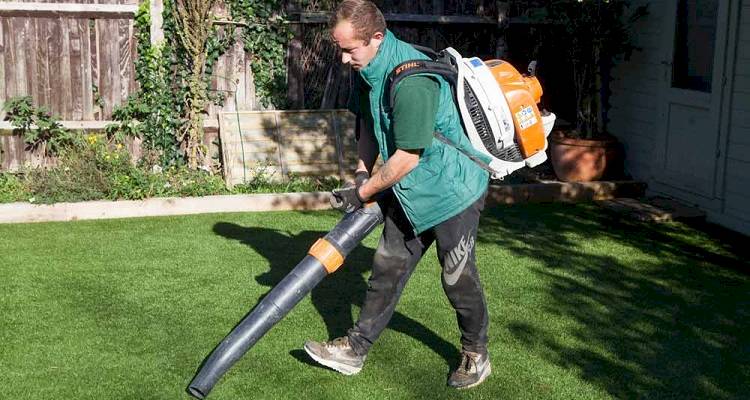
Repairing Artificial Grass
Artificial grass can be easily repaired by cutting out the damage and replacing the patch with more synthetic grass. However, to seamlessly blend in the fixed piece, it is essential to make sure that the replacement carpet is an exact match of your existing artificial turf. If it's not, you will clearly notice where the repair has been carried out, and it may end up looking worse off. Consider keeping a small amount of leftover carpet after you have installed your artificial grass, in case of any future repairs.

